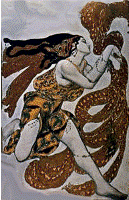

|
| |||||||||||||||||||||||||||||||||||||||||||||||||||||||
|
| |||||||||||||||||||||||||||||||||||||||||||||||||||||||
 about the history of Recordings and recordingIn these pages, Electricka and her muses explore the history, miracle, and blessing of records and recording. what is recording?Recording is the act or practice of a person or thing that records. As Electricka and her muses use the term here, recording includes the following topics: recordings, recording, and playback. Often the term recording is used synonymously with the terms recordings and playback. Recording and playing anything is a four-step process:
In this connection, the record is the storage agency; recording is the process that takes place in the first two steps; and playback is what takes place in last two steps. the story of recording, art, and history—a concise historyPrior to the first writing about 5,500 years ago, the only practical way to preserve a message was to create a piece of art—cave art, rock art, and carvings. Even ancient musical instruments similar to flutes have been discovered. At the right, above, is a painting of a horse recorded on the wall of the cave at Lascaux in Southern France, perhaps 17,000 or more years ago. At the left, below, is a recording of a kangaroo painted on a rock wall at an archeological cave site called Eagles Reach by an Australian Aborigine, perhaps as long ago as 40,000 years. These are examples of the kind of art first produced by mankind.
Improvements in sound projection stemming from the design of the Greek amphitheater made it possible for playwrights like Aeschylus and Euripides to mount acting performances on a stage before large audiences, a feat that fostered a flourishing of the theater. Because of advances in recording, the Greeks were able to write their plays on animal skins and we have a record of them today. Writing in the 15th century took a leap forward when Gutenberg invented moveable type and his printing press. His two inventions made mass communication possible and revolutionized recording; they changed the world forever. They mark the beginning of the era we live in—the era of mass media communications. Recording and the arts have always been inextricably linked. Man's urge to produce more, different, and better art has led to advances in recording technology. In turn, as recording technology gradually progressed, it enabled civilization to make advances in the arts. As we shall see in these pages, the ancient and modern Muses owe an eternal debt of gratitude to recording—to man's ability to make recordings. The history of art is in large measure the story of recording; the history of recording is in large measure the story of art. These two stories must be told together.
—Page 1, 2, 3, 4, 5—an account of the history of recordingElectricka and her Muses are pleased to offer an account of the history of recordings, recording, and playback. This account is a chronological list of events and developments that have taken place in recordings, recording, and playback since the dawn of civilization.
ancient cave paintings at lascaux
ETAF recommends...Coming.
Search this web site with Electricka's Search Tool:
tap or click here
Electricka's Theme Products
Shop At Cafe Press
This web site and
its contents are copyrighted by
Decision Consulting Incorporated (DCI).
All rights reserved. |
| ||||||||||||||||||||||||||||||||||||||||||||||||||||||